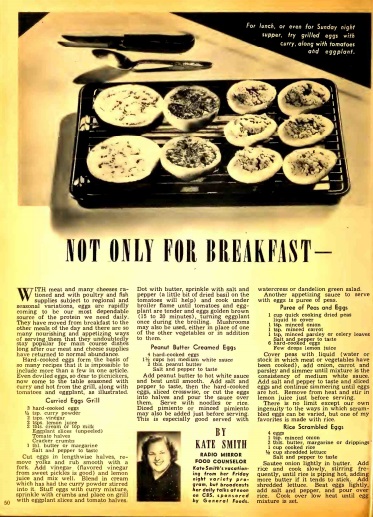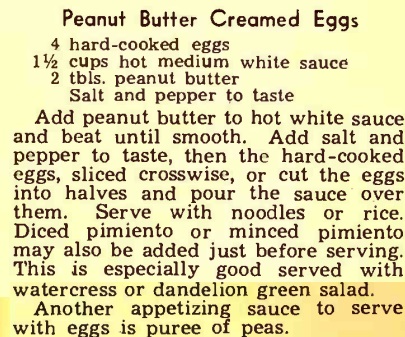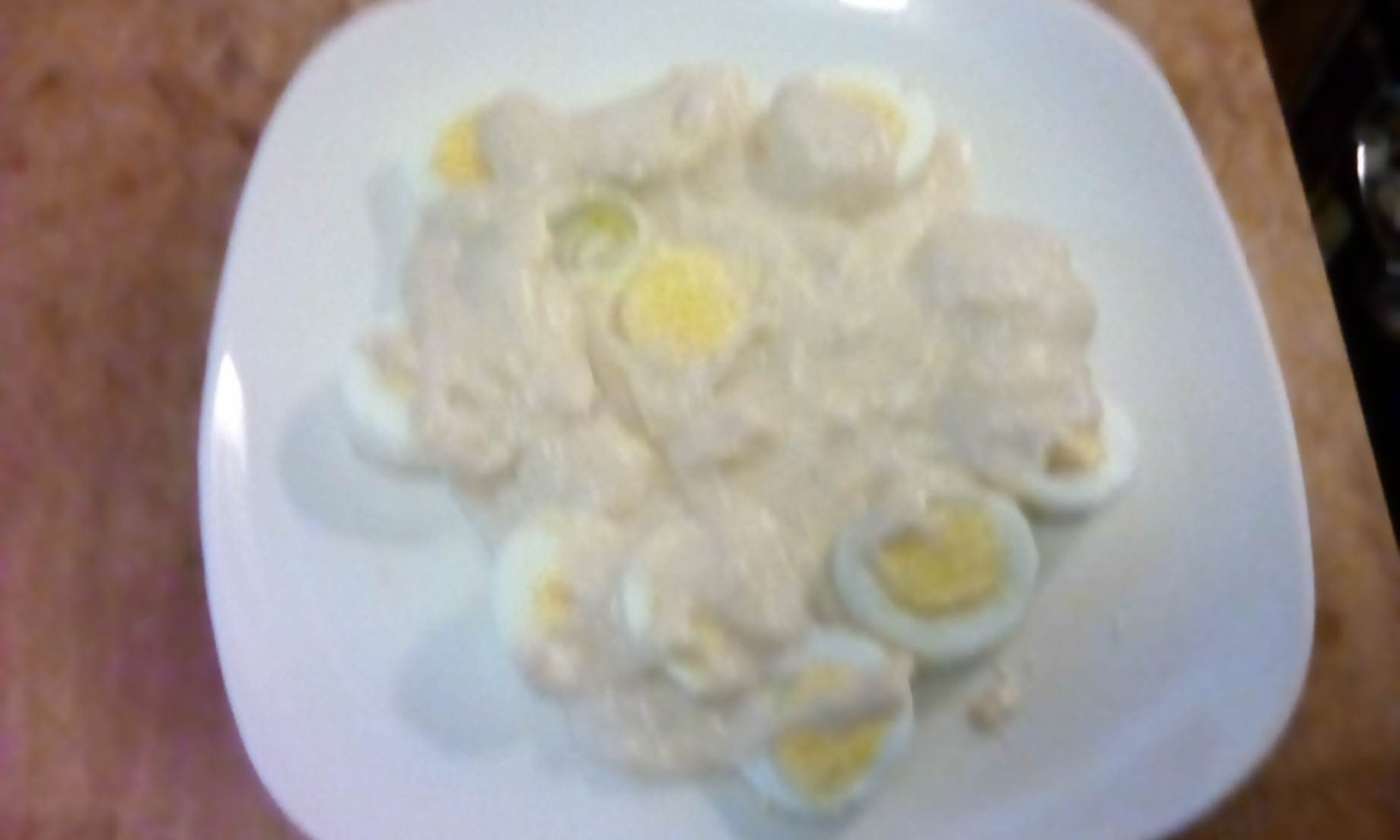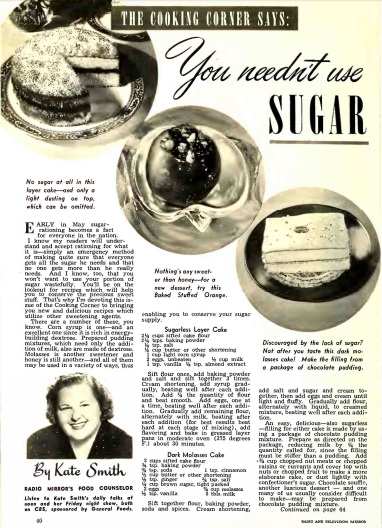 With wartime rationing of meat and even cheese, the humble egg was quickly becoming an important source of protein, and as Kate Smith‘s column in the August 1943 issue of Radio Mirror proclaims, it was no longer just for breakfast.
With wartime rationing of meat and even cheese, the humble egg was quickly becoming an important source of protein, and as Kate Smith‘s column in the August 1943 issue of Radio Mirror proclaims, it was no longer just for breakfast.
 Always helpful, she provided a number of recipes to make the egg the main course. I haven’t tried it (yet), but my favorite is the one reproduced here, for Peanut Butter Creamed Eggs. If you don’t know how to make white sauce, the Food Network comes to the rescue with the recipe. For the budget conscious victory gardener, serving it with a dandelion green salad is especially good.
Always helpful, she provided a number of recipes to make the egg the main course. I haven’t tried it (yet), but my favorite is the one reproduced here, for Peanut Butter Creamed Eggs. If you don’t know how to make white sauce, the Food Network comes to the rescue with the recipe. For the budget conscious victory gardener, serving it with a dandelion green salad is especially good.
Update: I decided to give it a try, and for an austere wartime meal, it wasn’t bad. It was very filling. I made the full recipe, and after eating a late lunch, I had about half left over. I was out of butter, but margarine seemed to work OK for the white sauce. I’m not sure if the peanut butter added much to the flavor. I think it would have been just as good with the white sauce and just salt and pepper.





